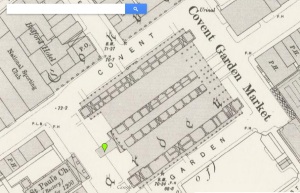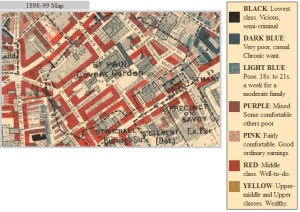Qualities of a Good DH Project: Large Data Set, Citations, Aesthetically Pleasing, Interactive, Search Feature
The new wave of scholarly work that is known as the ‘Digital Humanities’ is all about data (and lots of it). When the humanities and technology converge to create new research and discoveries, large amounts of information are compiled in order to do so. New questions cannot be asked without analyzing as much information as possible, so as to ensure a secure basis for those new inquiries. Living in the digital space, a Digital Humanities project is worth exploring if it has some key qualities.
A great DH project has a large data set that it pulls from, references, analyzes, reflects, or even contradicts. The more data there is in a project, the more expansive and the greater the opportunity to analyze findings, identify trends, and pose new questions. With that in mind, with large data comes large responsibility …to be scholarly. Incorporating lots of data is a wonderful first step, but citations are the important second step. The credibility of a project determines whether it is considered scholarly, and the best DH projects not only reveal new data, but also openly share the original data that the project pulls from.
The advent of digitizing works of the humanities creates a new question of ‘what will the digitized project look like?’ No matter what the project, a good DH work should be aesthetically pleasing. This does not mean that it needs to be reminiscent of the Romantic era, but it does need to look clear, rather than cluttered or illegible. At a glance an aesthetically pleasing project will look like it relates to the data that it is based upon. For example, a good mapping project or Ngram will be legible and clear, and a good topic modeling or word cloud project will at a glance be somewhat representative of the publications it is pulling from.
Aesthetics of a project are important for the analysis and exploration of them but looks aren’t everything. A good DH project is interactive. Depending on the type of project, this can be interpreted in several ways. In a word cloud visualization, the ability to hover over or click on words to learn about their frequency and other information is one form of interactivity. On a map, this could just mean the ability to zoom in and out, or it could mean having the ability to plot data points on a map or compare a map form the past to a map from the present. No matter what the form of engagement, a good DH project will take advantage of the endless possibilities that the digital space allows.
Related to project interactivity, a great DH project has some kind of search feature. The ability to not only explore the information in front of you in a project, but to also quickly explore related texts, visuals, maps, and more is what makes the digital space unique. Digitized projects that live online allow web surfers to have a world of information at their fingertips. On a map, searching could just mean plotting data on a map or it could mean searching for a specific street in a city. In a topic modeling project it could mean looking up metadata regarding a specific word across a corpus of texts. No matter what the search function, its addition to a project allows for that immediate exploration, analysis, and creation of questions.
The field of Digital Humanities has a modern goal made possible by the World Wide Web – to engage a broader network of scholars in the pursuit of knowledge of the humanities. Pulling discoveries from the modernization of dated texts, works, and arts, this field allows scholars to ask new questions because of the ability to share content online across oceans and continents. The “Digital” in Digital Humanities provides both an increase in accessibility and a modern approach to works of the humanities. Greater access means greater possibility of discovery and taking a modern look at older works creates for a new lens through which scholars can evaluate the past. Increased accessibility of old and new works, a broad network of scholars, and the use of digital tools all allow scholars to ask new questions through collaboration, detailed analysis, and modern technology.



